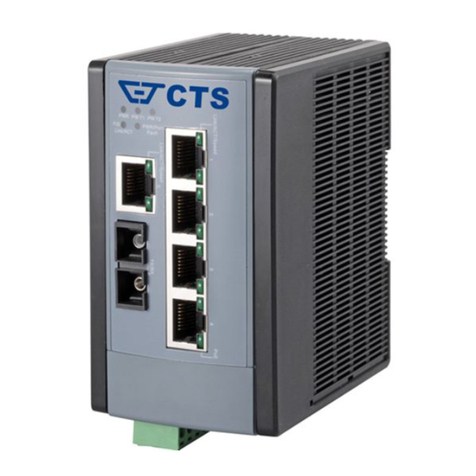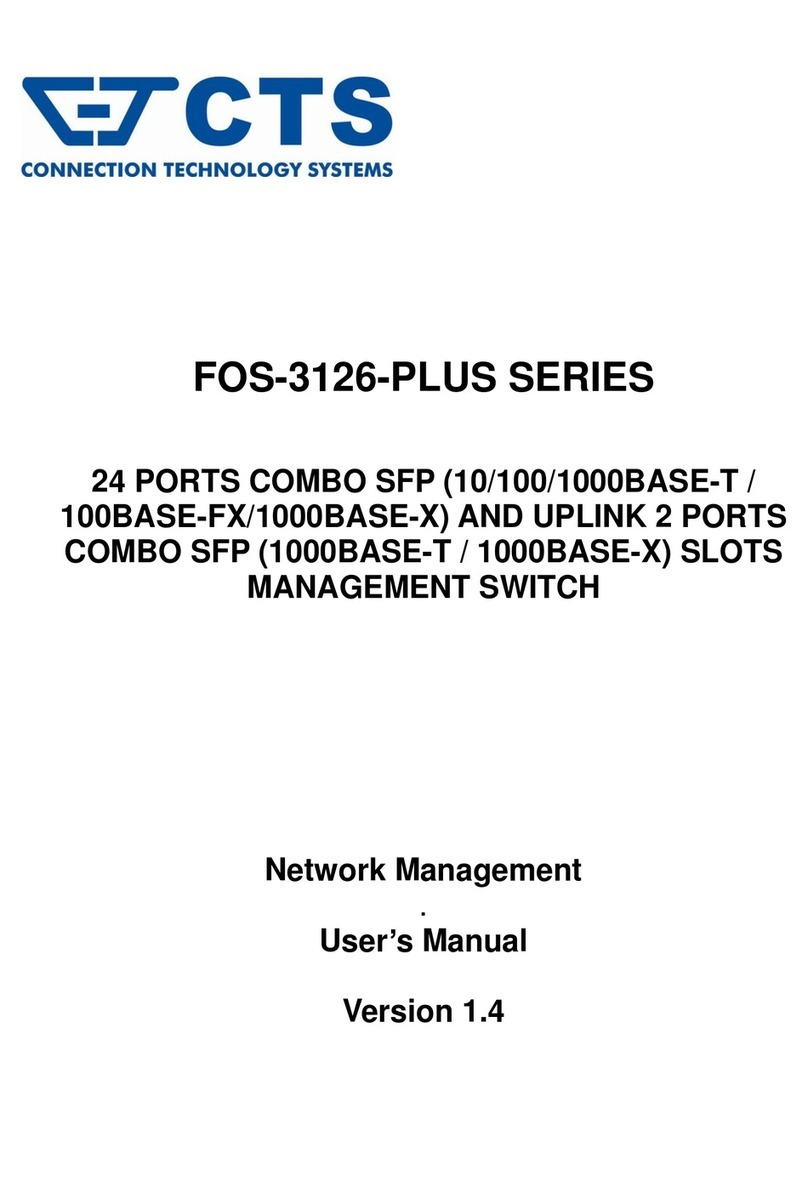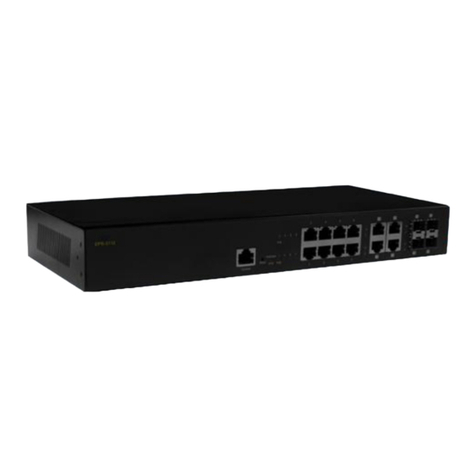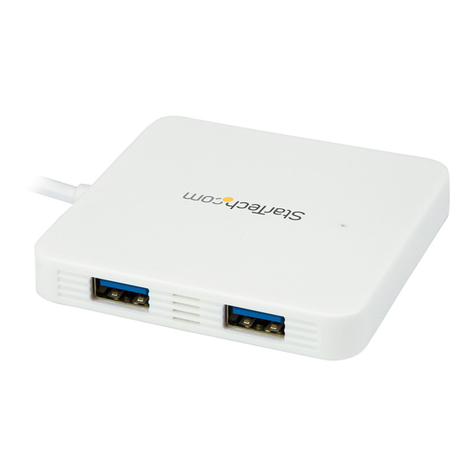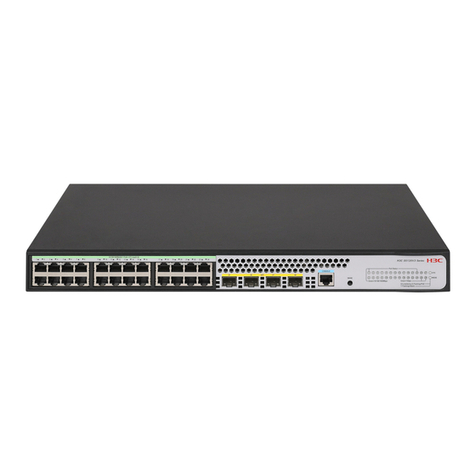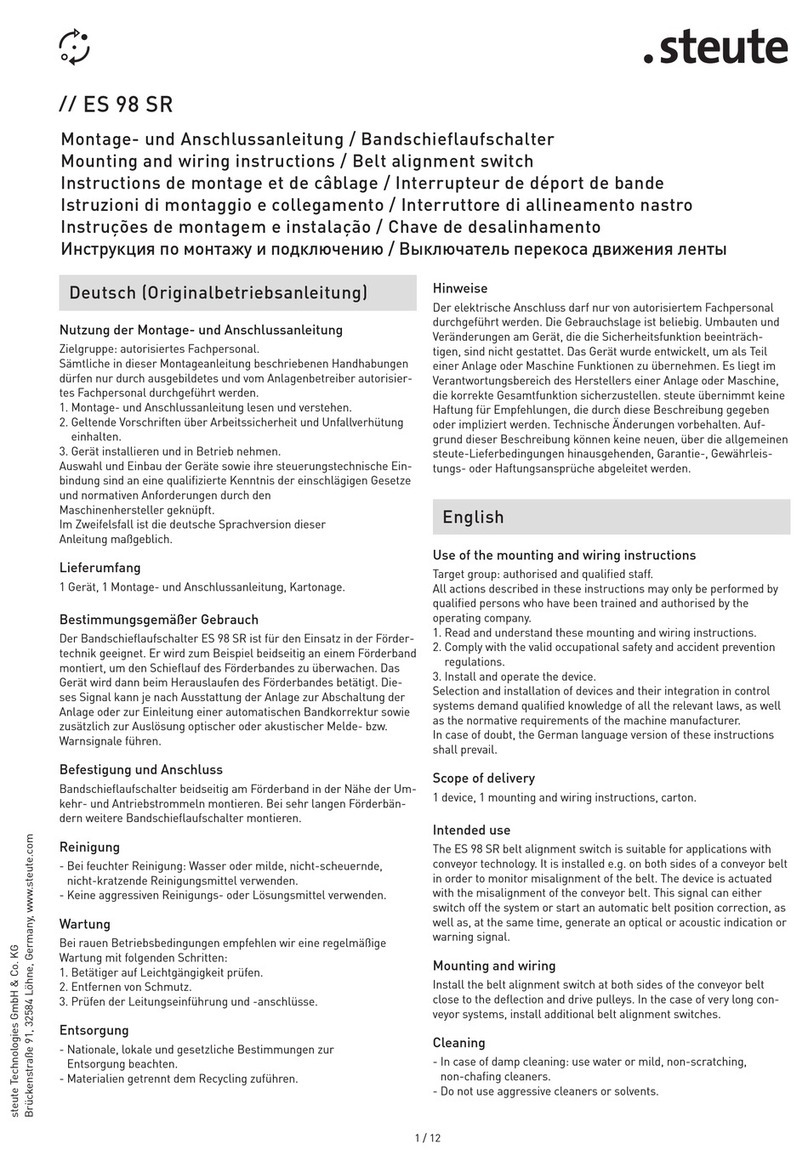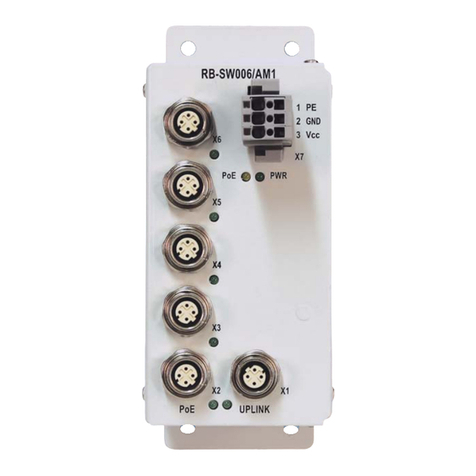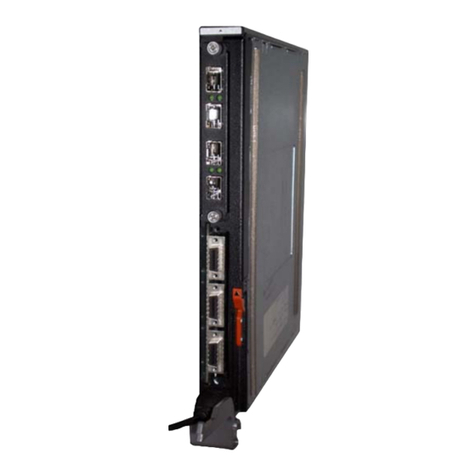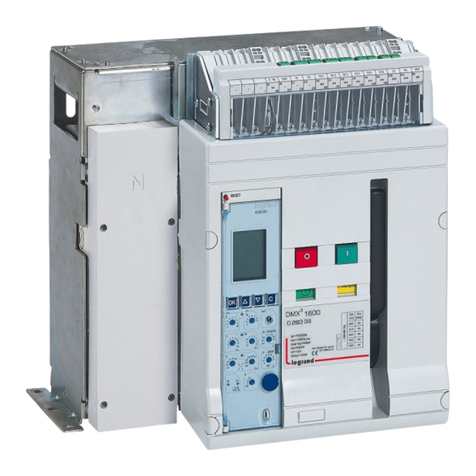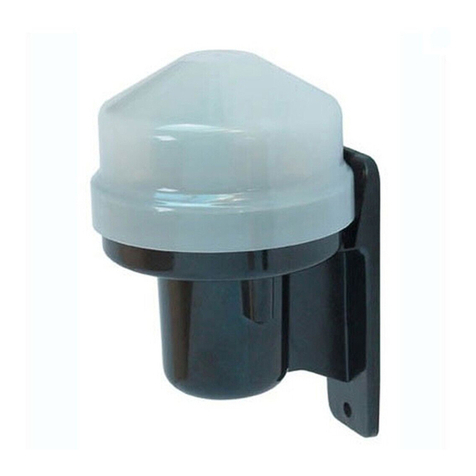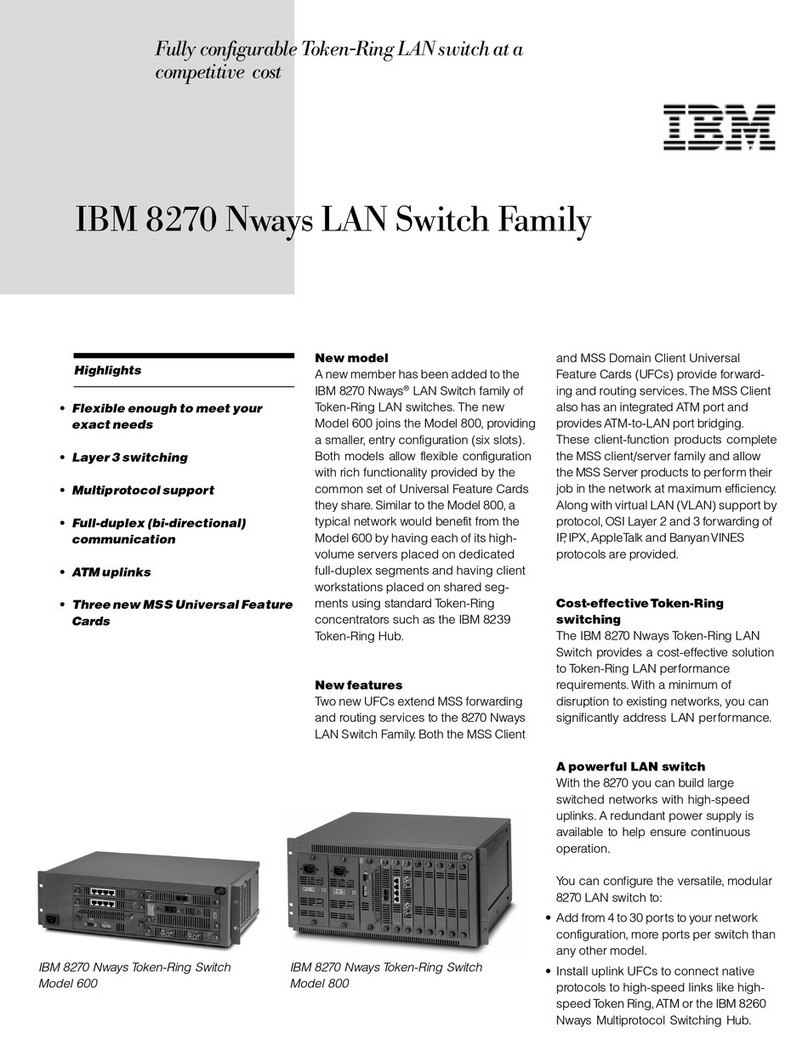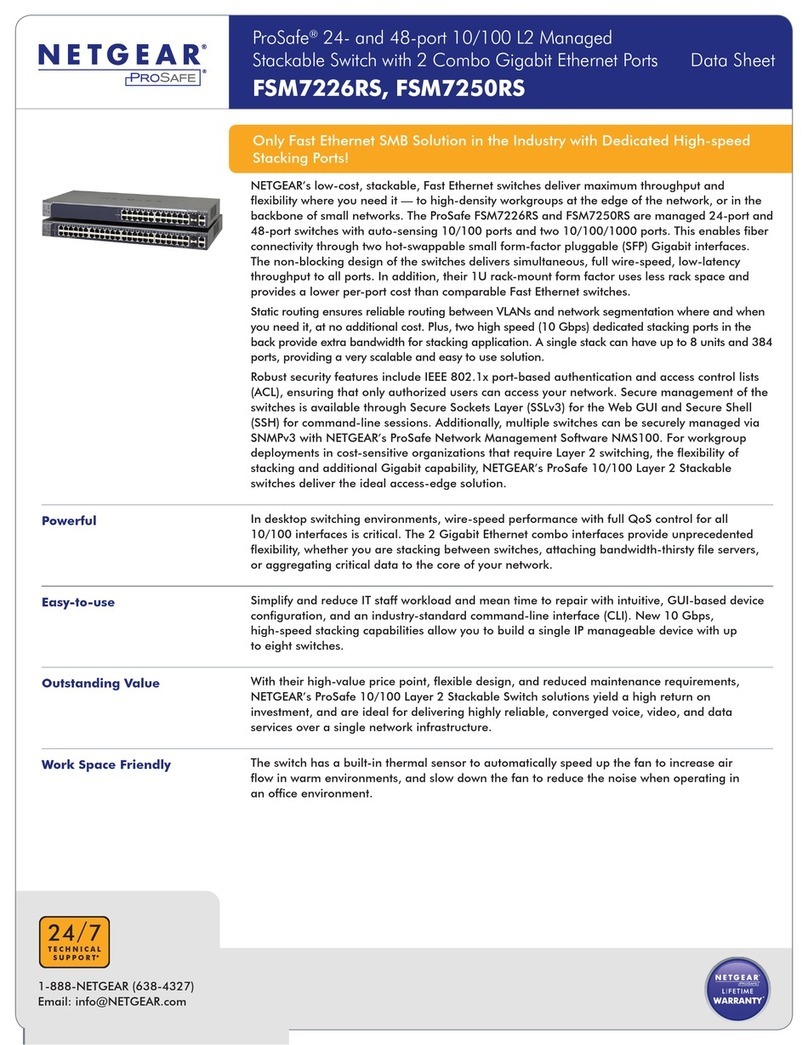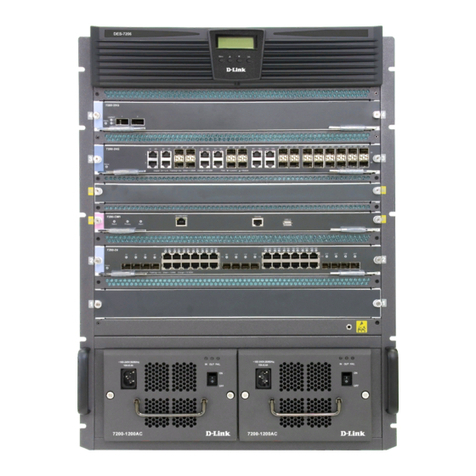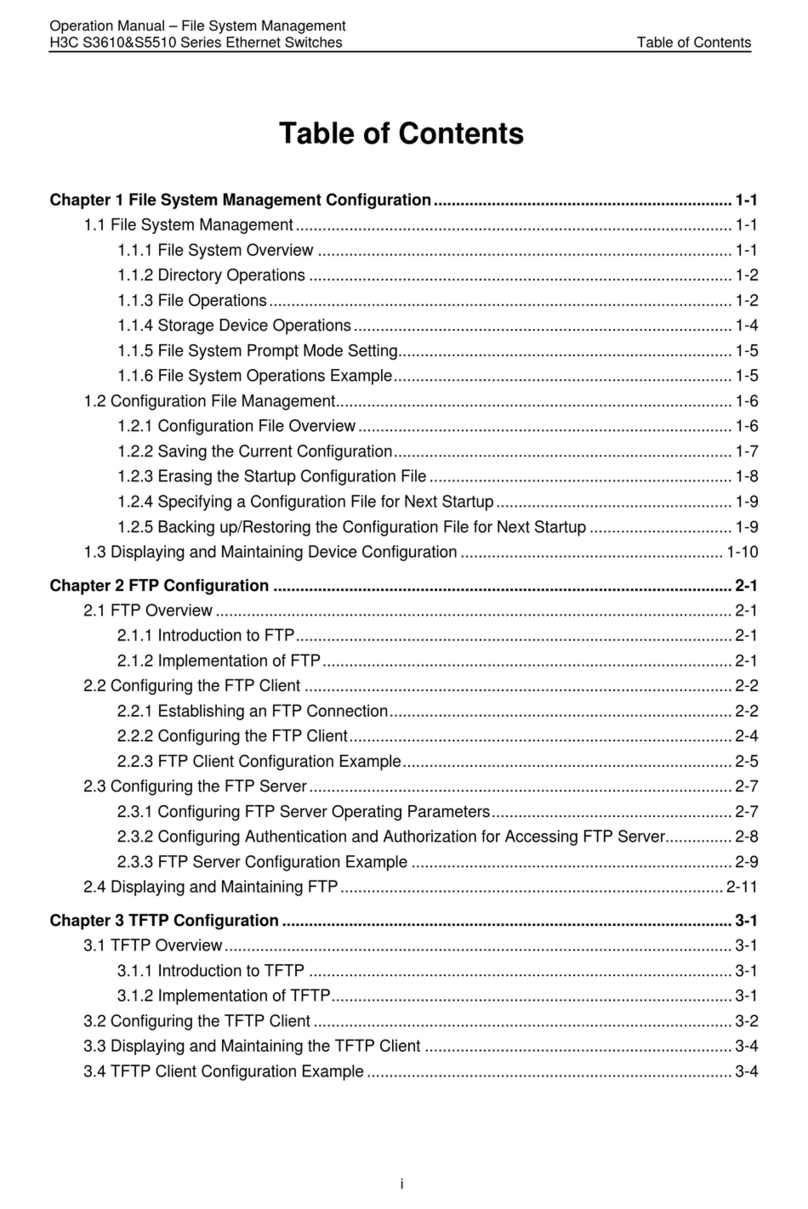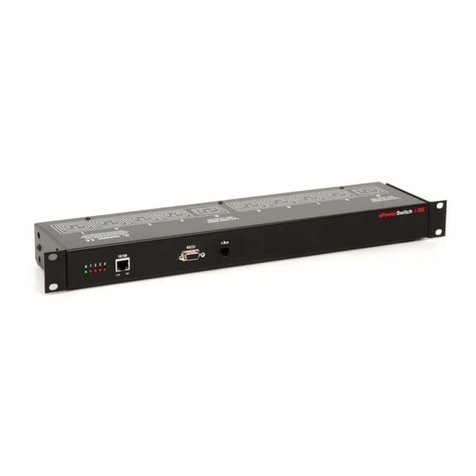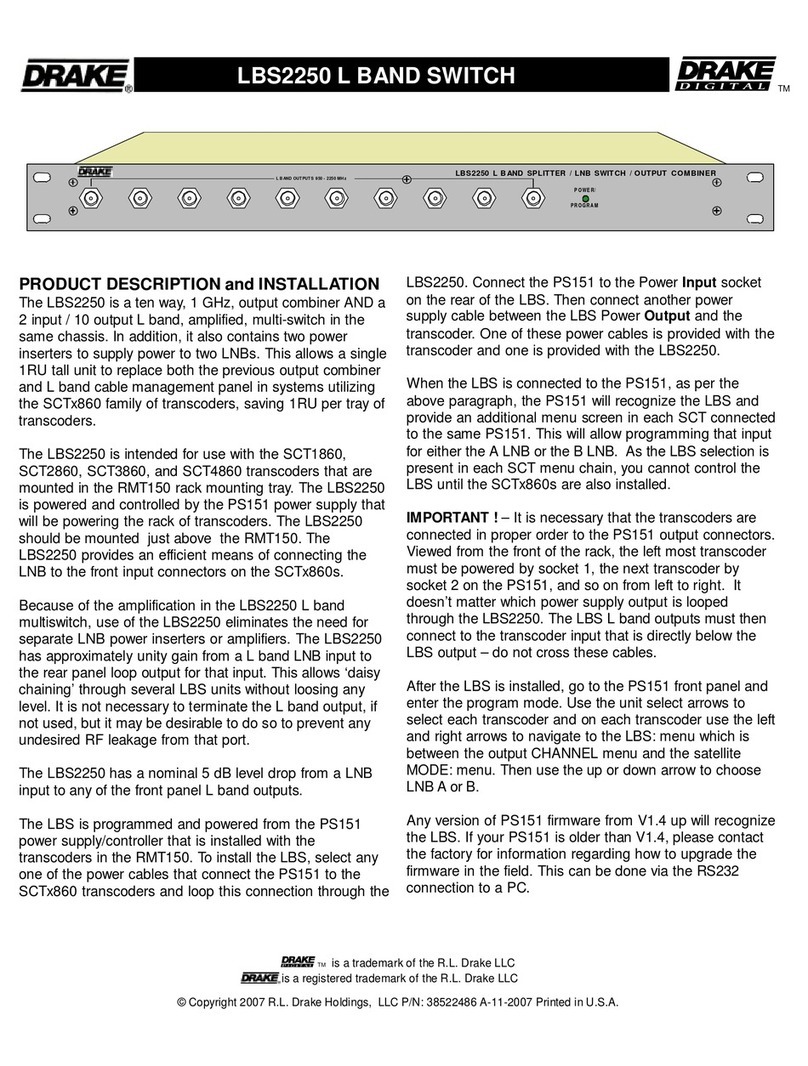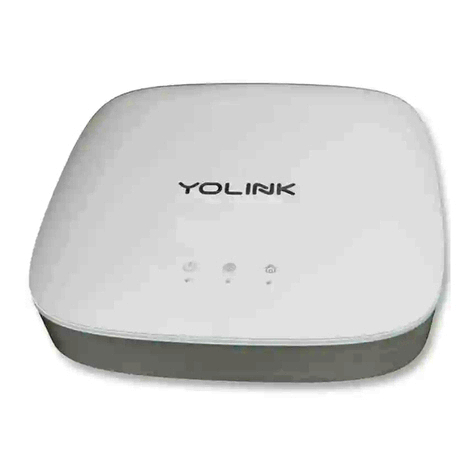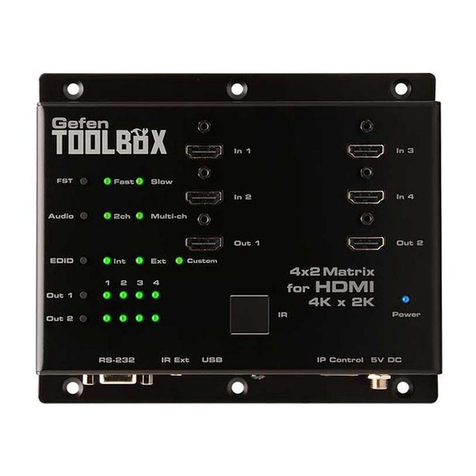CTS FOS-5128 Series User manual

FOS-5128 Series
L2 Managed Fiber Switch with 24
100/1000Mbps SFP Ports and 4 1Gbps/10Gbps
SFP+ Uplink Ports
User’s Guide
Version: 1.0

ii
Revision History
Version
Date
Changes
1.0
08/19/2019
First release
FCC Warning
This equipment has been tested and found to comply with the limits for a Class A digital device,
pursuant to Part 15 of the FCC Rules. These limits are designed to provide reasonable protection
against harmful interference when the equipment is operated in a commercial environment. This
equipment generates, uses, and can radiate radio frequency energy and, if not installed and used in
accordance with this user’s guide, may cause harmful interference to radio communications.
Operation of this equipment in a residential area is likely to cause harmful interference in which case
the user will be required to correct the interference at their own expense.
CE Mark Warning
This is a Class A product. In a domestic environment, this product may cause radio interference in
which case the user may be required to take adequate measures.
Trademarks
CTS is a registered trademark of Connection Technology Systems Inc.
All trademarks belong to their respective proprietors.
Contents subject to change without prior notice.
Copyright Statement
Connection Technology Systems Inc Copyright © 1998-2019
This publication may not be reproduced as a whole or in part, in any way whatsoever unless prior
consent has been obtained from Connection Technology Systems Inc.

iii
CTS Contact Information
▓Headquarters/Manufacturer:
Connection Technology Systems Inc.
18F-6, No.79, Sec.1, Xintai 5th Rd.,
Xizhi Dist., New Taipei City 221,
Taiwan(R.O.C.)
Tel: +886-2-2698-9661
Fax: +886-2-2698-3960
Sales Direct Line:+886-2-2698-9201
www.ctsystem.com
▓Global Offices:
Connection Technology USA
40538 La Purissima Way,
Fremont, CA 94539, USA
Tel: +1-510-509-0304
Sales Direct Line: +1-510-509-0305
E-mail:[email protected]
Connection Technology Systems Japan
Higobashi Bldg. No.3 R201, 1-23-13,
Edobori, Nishi-ku, Osaka 550-0002, Japan
Tel: +81-6-6450-8890
E-mail: cts_japan@ctsystem.com
Connection Technology Systems NE AB
August Barks Gata 21,
421 32 Västra Frölunda, Sweden
Tel: +46-31-221980
E-mail:
Connection Technology Systems
Central Europe (COMPONET
Handels GmbH)
Hirschstettner Straße 19-21/Stiege I
A-1220 Vienna, Austria
Tel: +43-1-235 05 66-0
E-mail: cts_ce@ctsystem.com

iv
Table of Contents
Revision History .......................................................................................ii
CTS CONTACT INFORMATION .....................................................................III
TABLE OF CONTENTS ..............................................................................IV
CHAPTER 1. INTRODUCTION....................................................................... 2
1.1 OVERVIEW OF FOS-5128 ...................................................................... 2
1.2 KEY FEATURES .................................................................................. 3
1.3 FRONT &REAR PANELS......................................................................... 5
1.3.1 Front Panel............................................................................... 5
1.3.2 Rear Panel ............................................................................... 7
1.4 LED DEFINITIONS ............................................................................... 8
1.5 CABLE SPECIFICATIONS ........................................................................10
CHAPTER 2. INSTALLATION ......................................................................11
2.1 INSTALLATION REQUIREMENTS .................................................................12
2.2 CHECKING THE PACKAGE CONTENTS ..........................................................12
2.3 INSTALLING THE MANAGED SWITCH ............................................................13
2.3.1 Desktop Installation....................................................................13
2.3.2 Rack Installation .......................................................................14
2.3.2.1 Install FOS-5128 Switch in a Rack ............................................14
2.4 POWERING ON THE MANAGED SWITCH.........................................................15
2.5 CONNECTING THE MANAGED SWITCH TO THE NETWORK ......................................15
2.6 INSTALLING AND REMOVING SFP/SFP+ MODULES ............................................15
2.6.1 Installing SFP/SFP+ Modules ........................................................15
2.6.2 Removing SFP/SFP+ Modules .......................................................16
2.7 CONNECTING THE SWITCH TO CONSOLE PORT ................................................16
CHAPTER 3. OPERATION....................................................................................................................................... 17
3.1 NETWORK MANAGEMENT .......................................................................17
CHAPTER 4. MAINTENANCE ......................................................................19
4.1 FAULT IDENTIFICATION .........................................................................19
4.1.1 Local Check ............................................................................19
4.1.2 Remote Check..........................................................................20
4.2 HARDWARE REPLACEMENT PROCEDURES .....................................................20
4.3 FIRMWARE UPGRADE...........................................................................20

Publication date: August 19, 2019
Revision 1.0 1
About this manual
In this user’s guide, it will not only clearly introduce CTS FOS-5128 Managed Switch but tell you
how to install this Managed Switch with detailed instructions.
Organization of the Manual
Chapter 1 “Introduction” describes the features of the Managed Switch
Chapter 2 “Installing the Managed Switch”
Chapter 3 “Operation”
Chapter 4 “Maintenance”

Introduction
Publication date: August 19, 2019
Revision 1.0
2
1
Introduction
CTS’s Managed Switch is designed to meet the emerging FTTX & Metro Ethernet requirements. Its
low profile appearance with 1U height and the standard rack-mounted size achieve the highest
density within a single rack. When massive fiber ports need to be deployed, the Managed Switch
provides the best performance and price ratio.
1.1 Overview of FOS-5128
FOS-5128, a compact 19-inch and rack mountable Managed Switch, has 24 Gigabit SFP ports
(100/1000Base-X) and 4 SFP+ uplink ports (1G/10GBase-R) on the front panel. This Managed
Switch provides high performance, store and forward switching capability plus other advanced
features such as QoS, VLAN, Spanning Tree, LACP and so on.
LED indicators located on the front panel ease the users’ effort to monitor and manage the network
status. The built-in management module also allows users to configure, control and monitor the
system locally via console or remotely via SNMP_ based management system.
This Managed Switch is a typical SFP/SFP+ solution to Metro Ethernet application. Besides, it can
be used as a stand-alone switch. With the height of 1U and the standard-size rack design in
appearance, FOS-5128 can be used in closet wiring as well.

Introduction
Publication date: August 19, 2019
Revision 1.0 3
1.2 Key Features
19 inch, 1U high
24 x 100/1000Base-X ports
-IEEE 802.3u/802.3z compliance
-Support Auto-Sensing for fiber ports
-SFP Slot
4 x 1G/10GBase-R SFP+ ports
-IEEE 802.3z compliance
-IEEE 802.3ae 10Gb/s Ethernet
-Support Auto-Sensing for fiber ports
-SFP+ Slot
Unique front access design for effortless installation and maintenance
Switching Features
-Store & forward switching
-Non-blocking switching fabric: 128Gbps
-Mac address table:16K
-Packet buffer total 12Mbit
-VLANs support up to 4K VLAN Groups
-802.1Q Tunneling (QinQ)
-VLAN Translation
-Support jumbo frame on all ports up to 9K bytes size
-QoS classification based on IEEE802.1p, TOS/DSCP
-Rate limit control
-SNTP time server
-Static multicasting
-IGMP v1/v2/v3 snooping
-IGMP fast leave & query
-MLD v1/v2 snooping
-IGMP filtering via filtering profile
-Multicast channel limitations per port
-DHCP snooping
-DHCP client and auto-provision
-DHCP relay agent with option 82
-Access Control List (ACL)
-Rapid Spanning Tree Protocol (RSTP)
-Link Layer Discovery Protocol (LLDP)
-IEEE 802.1X Authentication
-IPv6 over Ethernet
-IPv6 Addressing Architecture
-IPv6 Dual Stack
-Storm Control
-MAC Limiter
-CPU temperature alarm notification
-L2PT (Layer 2 Protocol Tunneling)
-Sticky MAC Address function

Introduction
Publication date: August 19, 2019
Revision 1.0
4
-Support the fan speed and internal power voltage monitoring for the system diagnostics
Management Functions
- Console
- Telnet & SSH/CLI
- Web (HTTP & HTTPS)
- RADIUS for authentication
-SNMP v1/v2c/v3 and network management
-SNMP Power-Down Trap
-Private, RFC-1213, RMON MIBs
-Port mirroring
-FTP, TFTP, HTTP server and client firmware upgrade
-TACACS+ for authentication
Operation Environment
- Operating Temperature: 0ºC~50ºC

Introduction
Publication date: August 19, 2019
Revision 1.0 5
1.3 Front & Rear Panels
1.3.1 Front Panel
The Managed Switch provides one fixed power module or two fixed power modules for redundancy
purpose. Depending on your physical environment requirements, the type of power module is
selectable and could be eitherAC input or DC input.
The interfaces on the front panel of the Managed Switch are described below:
1. 24 x 100/1000Base-X SFP ports (Ports 1-24)
2. 4 x 1G/10GBase-R SFP+ UPLINK ports (Ports 25-28):
3. Console Port:
An asynchronous serial console port supports the RS-232 electrical specification.
The console port can be used to manage the device, and the serial console port
settings should be configured as 9600, 8, n, 1.
4. Digital Input (Dry Contact):
A voltage-free connector that is used to decide whether the trigger occurs or not by
detecting its open/close status. The configuration is as follows:
- Open: Logic Level 0
- Close: Logic Level 1
5. Reset Button:
Press the reset button for 5~10 seconds, then release it to restart the system.
Press the reset button for more than 10 seconds, then release it to reset the
Managed Switch. The settings will be back to the factory defaults and restart the
system.
1
7
4
7
5
1
2
3
Figure 1-1. FOS-5128 Managed Switch Front Panel
5
6
6

Introduction
Publication date: August 19, 2019
Revision 1.0
6
6. LEDs:
Includes Power LEDs, COM LED, Status LED, LEDs of SFP 1~24 ports and LEDs
of SFP+ 25~28 ports. For more details on LEDs description, please refer to Section
1.4 LED Definitions.
7. Power module and Connector:
AC power connection: 100-240V, 50/60Hz, 0.6A~0.4A
DC power connection: 48V (Range: 44~52V), 1A

Introduction
Publication date: August 19, 2019
Revision 1.0 7
1.3.2 Rear Panel
The interface on the rear panel of the Managed Switch is described below:
8. FANs (Fixed):
Used for device’s heat dissipation. For more details on these fans’ state and speed,
please refer to FOS-5128 Network Management User’s Manual.
Figure 1-2. FOS-5128 Managed Switch Rear Panel
8 88

Introduction
Publication date: August 19, 2019
Revision 1.0
8
1.4 LED Definitions
The Managed Switch is Plug & Play compliant. The real-time operational status can be monitored
through a set of LED indicators located on the front panel.
Power A/B LED
The power status of the Managed Switch is indicated by the Power A/B LED on the front panel of
the device.
LED Color Operation
Power A/B
OFF No fixed-in power module exists or power is off.
Green Lit when power module is in normal operation.
Orange Fixed-in power module is no longer receiving power or
DC output fails.
Status LED
The Managed Switch status is indicated by the Status LED on the front panel of the device.
LED Color Operation
Status
Green Lit when the device is in normal operation.
Orange
Lit when the device is booting up or press the Reset
button for 5~10 seconds and then release to restart the
system.
Blinking when pressing the Reset button for more than
10 seconds and then release to reset (return to factory
default settings) and restart the system. The LED
indicator will blink in orange color for three times.
Figure 1-3. LEDs of FOS-5128 Managed Switch

Introduction
Publication date: August 19, 2019
Revision 1.0 9
COM LED
The console status is indicated by the COM LED on the front panel of the device.
LED
Color
Operation
COM
OFF
Either the console port is not activated or no session exists.
Green
Lit when the console port is activated and the session exists.
SFP 1~24 Port LEDs
LED
Color
Operation
Link/ACT/
Speed
OFF
No connection exists.
Green
Lit when Fiber 100Mbps port link is up.
Blinking when Fiber port is receiving and transmitting data
at the speed of 100Mbps.
Orange
Lit when Fiber 1000Mbps port link is up.
Rapidly blinking when Fiber port is receiving and
transmitting data at the speed of 1000Mbps.
Slowly blinking in every 1 second when Fiber port is in
loop.
SFP+ 25~28 Port LEDs
LED
Color
Operation
Link/ACT/
Speed
OFF
No connection.
Orange
Lit when Fiber 1Gbps port link is up.
Rapidly blinking when Fiber port is receiving and transmitting
data at the speed of 1Gbps.
Blue
Lit when Fiber 10Gbps port link is up.
Blinking when Fiber port is receiving and transmitting data at
the speed of 10Gbps.
Slowly blinking in every 1 second when Fiber port is in loop.

Introduction
Publication date: August 19, 2019
Revision 1.0
10
1.5 Cable Specifications
The following table contains various cable specifications for the Managed Switch. Please make sure
that you use the proper cable when connecting the Managed Switch.
Cable Type
Description
100BASE-FX
Multi-mode fiber module(2km) / Single-mode fiber
module
1000BASE-SX
Multi-mode fiber module (550m)
1000BASE-LX
Single-mode fiber module (10km)
1000BASE-LH
Single-mode fiber module (30km/50km)
1000BASE-ZX
Single-mode fiber module (80km)
SFP Transceiver
SFP Transceiver for 1000BASE-SX Multi-mode fiber
module (550m)
SFP Transceiver for 1000BASE-LX Single-mode fiber
module (10km)
SFP Transceiver for 1000BASE-LH Single-mode fiber
module (30km/50km)
SFP Transceiver for 1000BASE-ZX Single-mode fiber
module (80km)
10GBASE-SR
Multi-mode fiber module (26m or 400m)
10GBASE-LR
Single-mode fiber module (10km)
10GBASE-ER
Single-mode fiber module (40km)
10GBASE-LRM
Multi-mode fiber module (220m)

Installation
Publication date: August 19, 2019
Revision 1.0 11
2
Installation
To properly install the FOS-5128 Managed Switch, please follow the procedures listed below. These
procedures will be respectively described in detail in the following sections.
Installation Requirements
Checking the Package Contents
Installing the Managed Switch
Powering on the Managed Switch
Connecting the Managed Switch to the Network

Installation
Publication date: August 19, 2019
Revision 1.0
12
2.1 Installation Requirements
Basic requirements for installation are as follows:
Environmental conditions
One power outlet
Proper ventilation
Proper isolation to electrical noise, radio, etc.
Required SFP/SFP+ Transceiver
Rack mounting tools
2.2 Checking the Package Contents
Unpack the package carefully and check the package contents. The package should contain the
following items:
One set of the Managed Switch
19-inch rack-mount kit (Fixed in the Managed Switch when shipped)
Four rubber feet with adhesive backing
Console RS-232 cable with RJ-45 connector
Documentation CD
AC power cord (For AC power module only)
If any item is found missing or damaged, please contact your local sales representative for support
or replacement.

Installation
Publication date: August 19, 2019
Revision 1.0 13
2.3 Installing the Managed Switch
You can install the FOS-5128 switch on a flat surface or mount it in a standard 19-inch network
equipment rack.
CAUTION
To prevent any damage or failure of the Managed Switch, please DO NOT block
the ventilation FAN holes.
Use the following guidelines when choosing a place to install the switch:
Firm and steady flat surface.
Proper power outlet location, not too far from the device.
Visually inspect the power cord and see that it is secured to the AC power connector.
Make sure that there is proper heat dissipation from and adequate ventilation around the
switch. Do not place heavy objects on the Managed Switch.
2.3.1 Desktop Installation
The switch can be placed in any flat and steady surface with proper air ventilation. Four rubber feet
with adhesive backing are provided for this kind of installation.
Procedures
➊Attach rubber feet on the bottom at each corner of the device.
➋Select a flat and steady surface to place the switch.
➌Allow adequate space for ventilation between the device and the objects around it.

Installation
Publication date: August 19, 2019
Revision 1.0
14
2.3.2 Rack Installation
In the following section, we will take the FOS-5128 Managed Switch for example to install a 19-inch
switch in a standard 19-inch network equipment rack.
WARNING!
Please mount the Switch firmly in rack, otherwise it may fall and cause the
system damage and possible injury to personnel.
2.3.2.1 Install FOS-5128 Switch in a Rack
The Managed Switch can be mounted in an EIA standard-sized, 19-inch rack, which can be placed
in a wiring closet with other equipment. Rack mounting brackets are provided to mount the Switch.
Just follow the procedures listed below for step-by-step instructions to install your switch in this rack
space:
Step 1. Plan the rack position.
Step 2. Align the mounting holes in the brackets with the desired holes in the rack, and insert
screws through each bracket and into the rack. (See Figure 2-1)
Step 3. Then, tighten the screws with the screwdriver to secure mounting brackets to the rack.
Step 4. Please ensure that the ventilation holes are not blocked.
Figure 2-1. FOS-5128 Switch Rack-mounting

Installation
Publication date: August 19, 2019
Revision 1.0 15
2.4 Powering on the Managed Switch
The Managed Switch can be used with AC power supply 100-240 V, 50–60 Hz, 0.6A~0.4A or DC
power supply 48V (Range: 44~52V), 1A. After the Managed Switch is turned on, the Power LED
indicators should light in green color and the FAN should spin. For more details about the power
LED description, please refer to Section 1.4 LED Definitions.
Power Failure
In the event of power failure, unplug the power that is plugged into the switch in the front of the
device. When power is resumed, plug the power back to the switch.
2.5 Connecting the Managed Switch to the
Network
Connect to Network
The Managed Switch has 24 SFP ports and 4 SFP+ ports on the front panel. These 24 SFP ports
can be plugged with 100Base-FX or 1000Base-X SFP Fiber transceiver. Uplink ports 25-28 can be
plugged with 1000Base-X SFP Fiber transceiver or 10GBase-R SFP+ Fiber transceiver. The
connection of the fiber port must be matched, i.e. Transmitter to Receiver, and vice versa.
2.6 Installing and Removing SFP/SFP+ Modules
2.6.1 Installing SFP/SFP+ Modules
To connect the fiber transceiver and LC/SC cable, use the following guidelines:
1. Position the SFP/SFP+ transceiver with the handle on top.
2. Locate the triangular marking in the slot and align it with the bottom of thetransceiver.
3. Insert the SFP/SFP+ transceiver into the slot until it clicks intoplace.
4. Make sure the module is seated correctly before sliding the module into the slot.A click
sounds when it is locked in place.
Note: If you are attaching fiber optic cables to the transceiver, continue with the following step. Otherwise,
repeat the previous steps to install the remaining SFP/SFP+ transceivers in the device.
1. Remove the protective plug from the SFP/SFP+ transceiver.
Note: Do not remove the dust plug from the transceiver if you are not installing the fiber optic cable at this
time. The dust plug protects hardware from dust contamination.
2. Insert the fiber cable into the transceiver. The connector snaps into place andlocks.
3. Repeat the previous procedures to install any additional SFP/SFP+ transceivers in the
switch. The fiber port is now set up.

Installation
Publication date: August 19, 2019
Revision 1.0
16
2.6.2 Removing SFP/SFP+ Modules
To disconnect an LC/SC connector, use the following guidelines:
1. Press down and hold the locking clips on the upper side of the opticcable.
2. Pull the optic cable out to release it from thetransceiver.
3. Hold the handle on the transceiver and pull the transceiver out of theslot.
2.7 Connecting the Switch to Console Port
The switch supports a secondary means of management. By connecting the RJ45 to RS232 serial
cable between a COM port on your PC (9-pin D-sub female) and the switch’s RJ45 (RJ45) port, a
wired connection for management can be established.
Table of contents
Other CTS Switch manuals
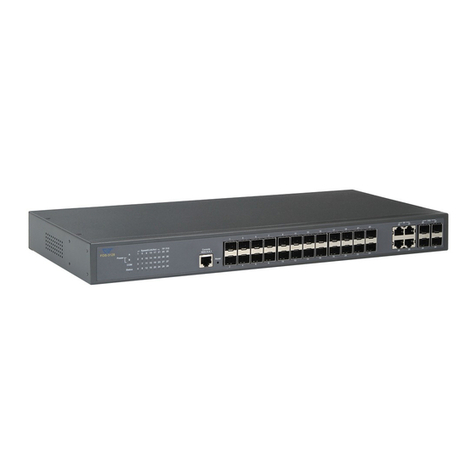
CTS
CTS FOS-3124-BAT-II Series User manual
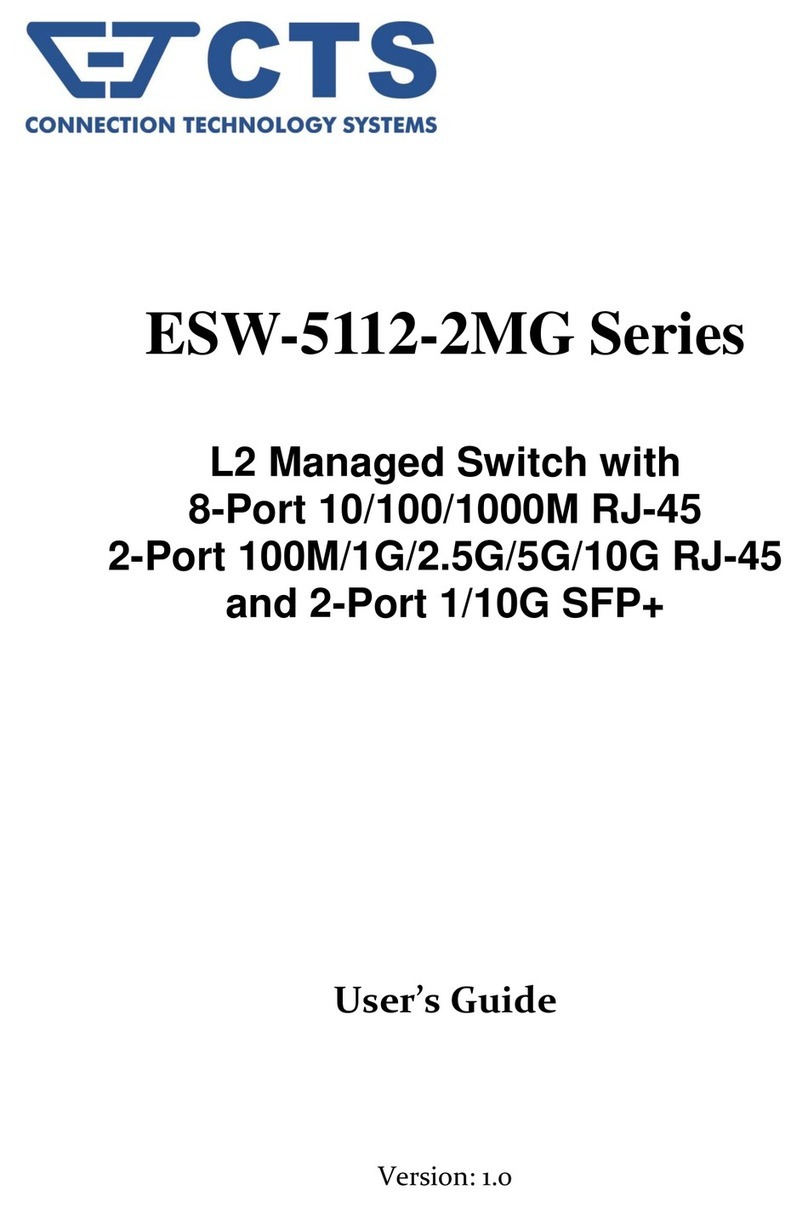
CTS
CTS ESW-5112-2MG Series User manual
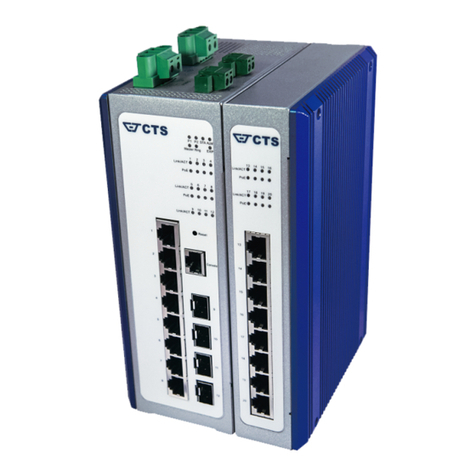
CTS
CTS IPS-3120-PoE++ User manual
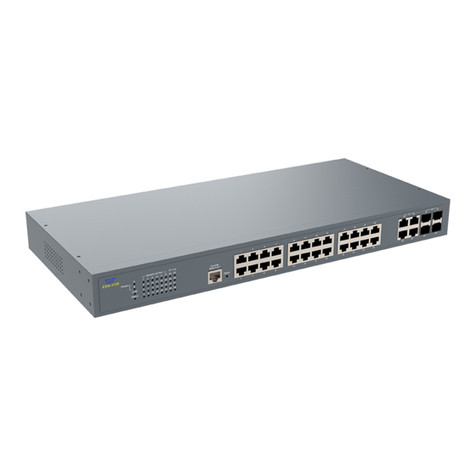
CTS
CTS ESW-3128 Series User manual
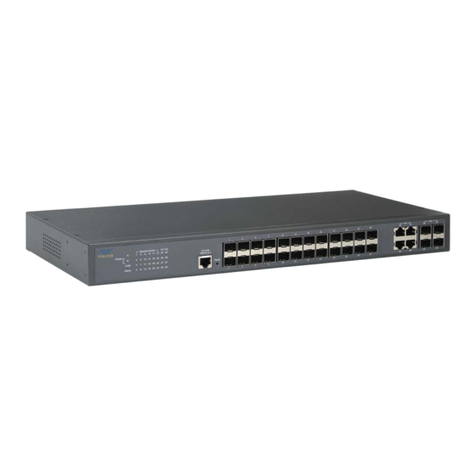
CTS
CTS FOS-3128 Series User manual
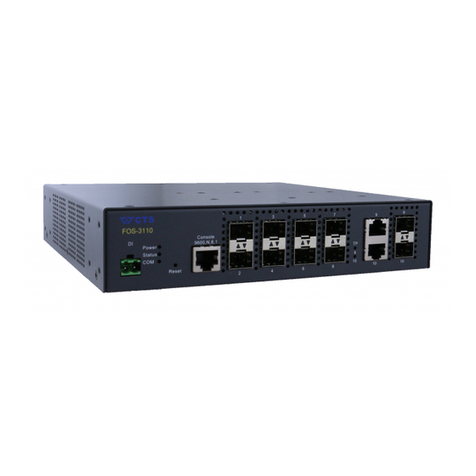
CTS
CTS FOS-3110 Series User manual
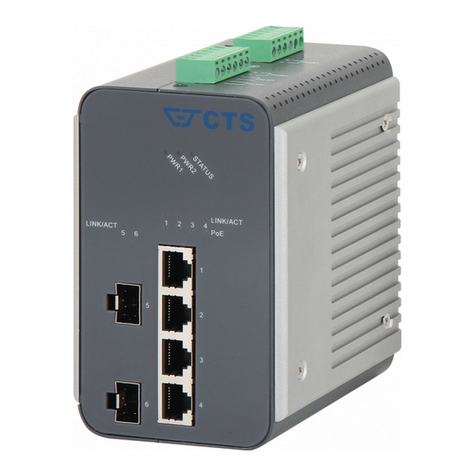
CTS
CTS IPS-3006 Series User manual
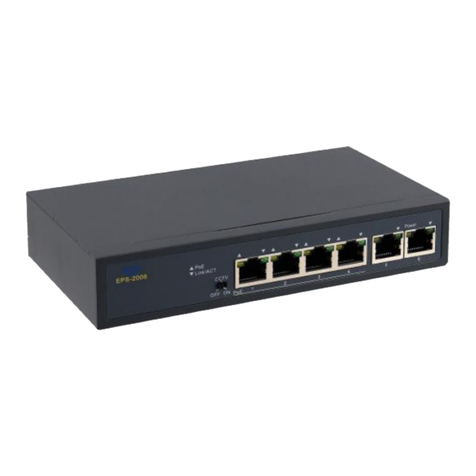
CTS
CTS EPS-2006 User manual
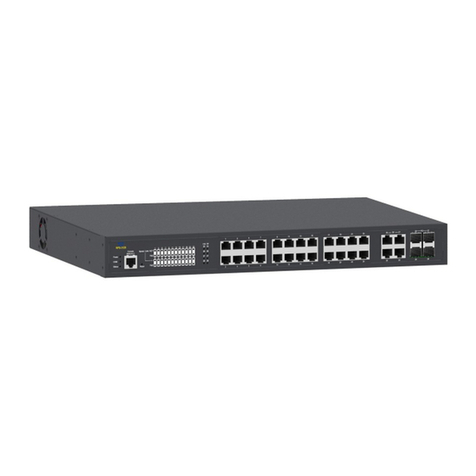
CTS
CTS EPS-3128 Series User manual

CTS
CTS FOS-3124 SERIES User manual
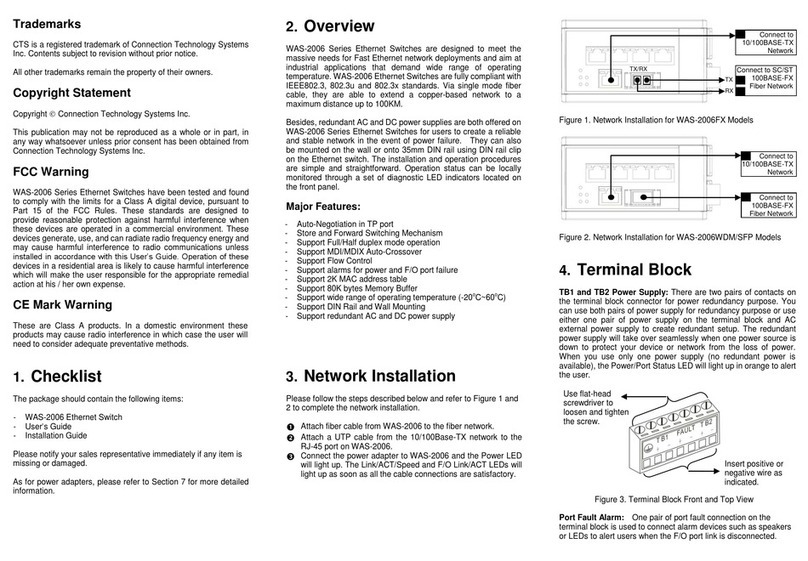
CTS
CTS WAS-2006 Series User manual

CTS
CTS FOS-5112 User manual
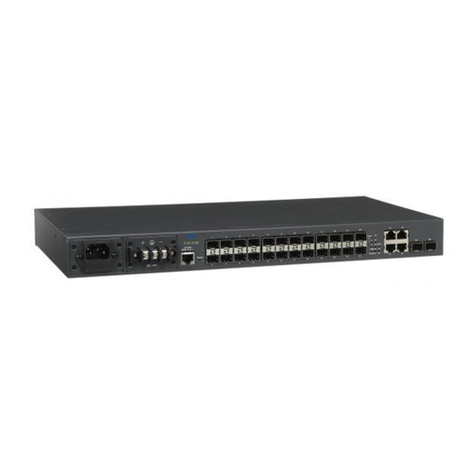
CTS
CTS FOS-5126 Series User manual
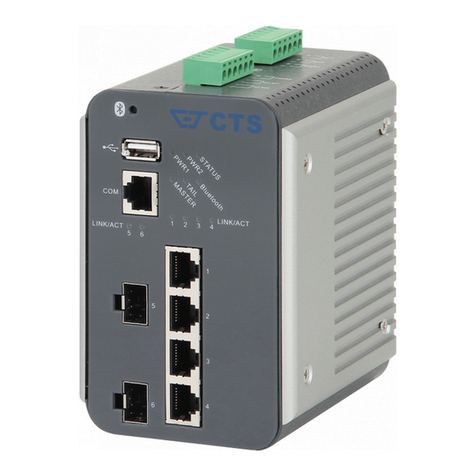
CTS
CTS IES-3106 Series User manual

CTS
CTS EPS-3128 Series User manual
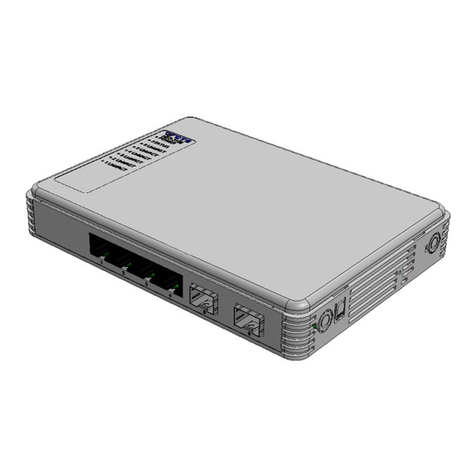
CTS
CTS HES-3106SFP-F2 User manual
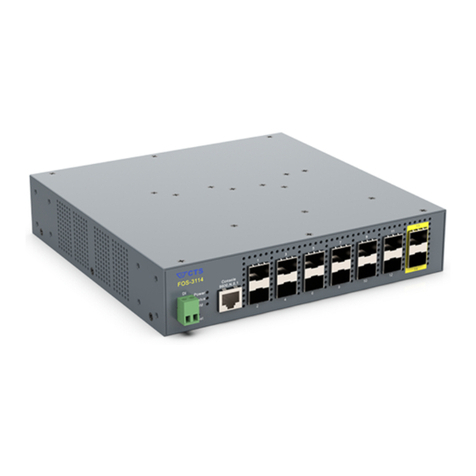
CTS
CTS FOS-3114 Series User manual
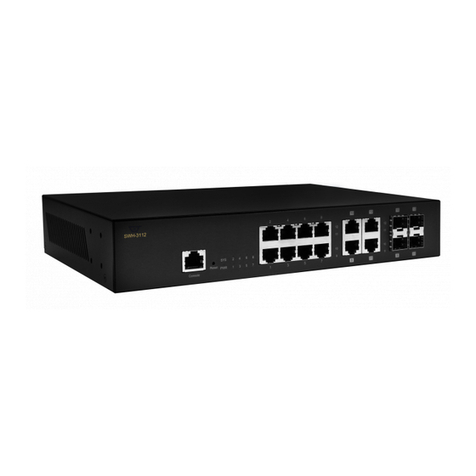
CTS
CTS SWH-3112 Series User manual
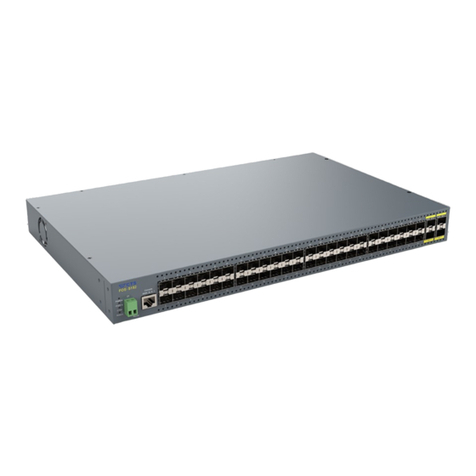
CTS
CTS FOS-5152 Series User manual
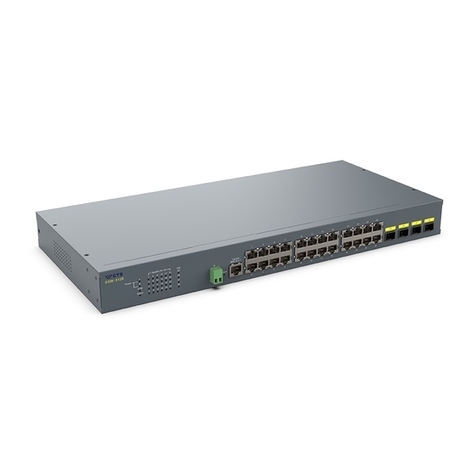
CTS
CTS ESW-5128 Series User manual
